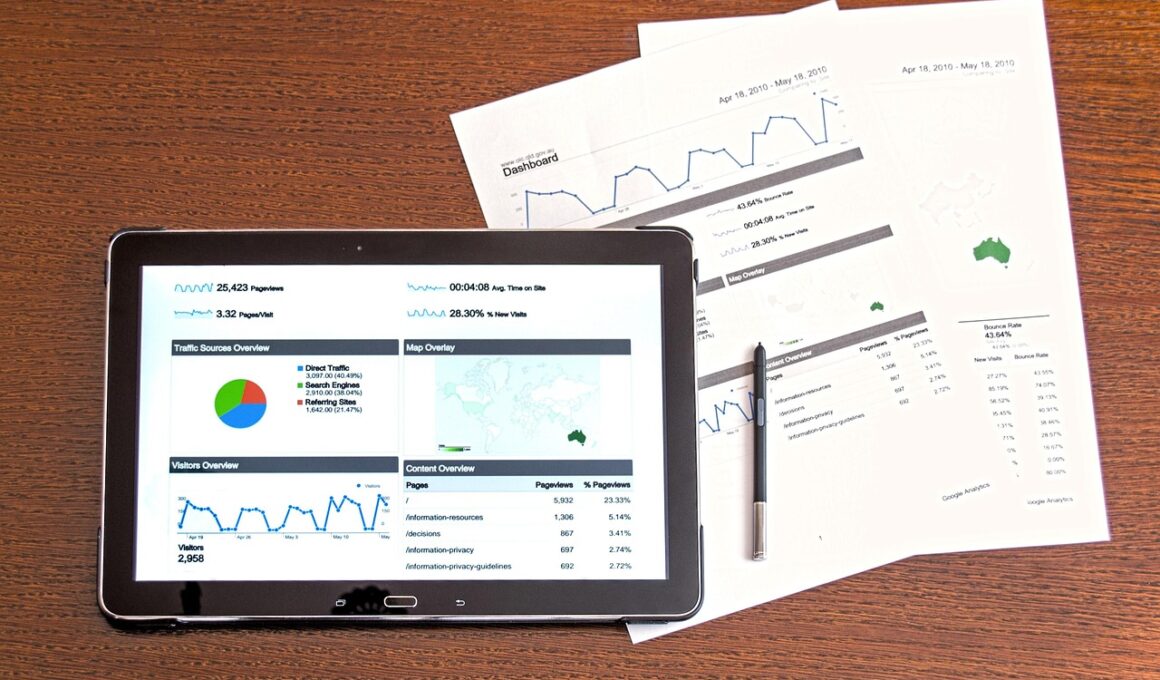Influencer Marketing Analytics: From Data to Growth Hacks
In today’s digital age, influencer marketing has transformed how brands engage with consumers. Utilizing data-driven insights is crucial for marketers looking to maximize their campaigns’ effectiveness. By identifying key performance metrics, businesses can adjust their strategies based on real-time performance data. Analytics tools assist in understanding which influencer partnerships yield the best results. Success in this realm hinges on selecting influencers who resonate with target audiences. In addition, analyzing audience demographics, engagement rates, and content performance can guide decisions. These analytics tools can provide invaluable insights that help optimize campaigns, ensuring that brands communicate effectively with consumers. By leveraging analytics, brands can also predict future trends and consumer behaviors. This allows for proactive strategy adjustments that can drive growth. Social media platforms are constantly evolving, making it essential to stay ahead of the curve. Brands that effectively utilize influencer marketing analytics can cultivate deeper relationships with their audience. Therefore, investing in the right tools and technologies is imperative for sustained growth in the influencer marketing landscape.
Key Metrics for Effective Analysis
One of the most significant elements of influencer marketing analytics is measuring key performance indicators (KPIs). Understanding which KPIs to focus on can greatly enhance a campaign’s success. Commonly used metrics include engagement rate, reach, impressions, and conversion rate. Each one sheds light on different aspects of influencer performance and audience interaction. Engagement rates, for example, measure how effectively influencers can captivate their audience. This metric helps brands assess whether influencers are fostering authentic connections. Reach and impressions provide insight into how many people viewed the content. Conversion rates indicate how many viewers took desired actions, such as making a purchase. By closely monitoring these metrics, brands can make informed decisions about selecting influencers and tweaking messaging. Additionally, utilizing advanced analytics tools can facilitate deeper dives into demographic insights. Brands can discover who is engaging with their campaigns, thereby aligning future efforts with their target market. An analytical approach ensures that resources are allocated wisely and that the strategies being employed are effective. This data-driven methodology is what propels growth in influencer marketing.
Data Segmentation for Enhanced Insights
Segmentation of data is crucial in influencer marketing analytics. By breaking down data into manageable categories, brands can gain a more nuanced understanding of audience behaviors. Segmentation can be based on various factors, such as geographic locations, age groups, or engagement levels. By analyzing these segments individually, marketers can tailor their strategies more effectively. For instance, a younger audience may respond better to specific types of content compared to older demographics. Thus, segmentation allows for personalized marketing efforts, which typically yield higher engagement rates. Additionally, employing advanced analytics tools assists in automating the segmentation process, making it more efficient and timely. It enables marketers to adjust their approach quickly based on how different audience segments perform. This agility is critical in a fast-paced social media environment. Moreover, brands can identify emerging trends in specific segments, allowing for proactive campaign adjustments. As new data emerges, algorithms can be trained to provide recommendations for targeting improved audiences. Overall, segmentation of data forms a core part of a successful influencer marketing strategy.
The Role of Influencer Content Analytics
Content analytics is another pivotal aspect of influencer marketing analytics. Understanding what type of content resonates with audiences helps brands refine their strategies. Through analytics tools, marketers can assess various elements of influencer-generated content. These elements include post formats, captions, visuals, and hashtags. Specific data points can reveal which styles lead to higher engagement and reach. For example, videos may drive more viewer interaction than static images in certain cases. Additionally, analyzing sentiments within comments can provide further insight into audience perceptions. Content that sparks positive reactions can inform future campaigns. Likewise, negative feedback can guide content adjustments necessary to resonate better with followers. Brands need to encourage a feedback loop for influencers to optimize their messaging continuously. By continuously monitoring content performance, brands can shift their focus swiftly towards what works while phasing out less effective strategies. This targeted approach allows for adaptive content creation that matches audience preferences. Ultimately, content analytics contributes significantly to maximizing the return on influencers’ marketing investments.
Tools for Analytics and Growth Hacks
Numerous tools are available to aid brands in conducting thorough influencer marketing analytics. Utilizing robust software can streamline the analysis process and provide deeper insights. Platforms like Sprout Social, Hootsuite, or Meltwater offer comprehensive analytics tools tailored for social media. These allow brands to monitor campaigns, track influencer performance, and gather data across multiple networks. Furthermore, tools like Google Analytics can help assess traffic driven from influencer posts to a brand’s website. By integrating various tools, marketers can cultivate a 360-degree view of their campaigns. These insights translate directly into refined strategies which can foster growth. Understanding user acquisition channels, identifying high-performing content, and recognizing influential voices are critical elements of this strategy. Brands can also use social listening tools to analyze how audiences react beyond mere engagement metrics. The insights gathered can help guide future influencer partnerships and content creation. Not only do these tools aid in performance measurement, but they also enable proactive adjustments based on empirical data, ensuring that campaigns remain relevant. Ultimately, the effectiveness of influencer marketing is deeply tied to the tools employed.
Future Trends in Influencer Marketing
The future of influencer marketing looks promising, and analytics will play a vital role in shaping its evolution. Emerging technology such as artificial intelligence (AI) will refine targeting efforts, enabling brands to find perfect fit influencers seamlessly. Enhanced data analysis will also predict engagement based on previous campaign outcomes, making influencer selection more data-driven. The rise of short-form video content has changed audience expectations, compelling brands to adapt their strategies. Analytics tools must evolve alongside these trends, offering insights into how video content performs. Furthermore, as regulations around transparency become stricter, analytics will ensure compliance and trust among audiences. Brands will increasingly need to showcase genuine partnerships, making analytics indispensable in proving the authenticity of influencer relationships. Marketers will likely focus more on relationship-building rather than transactional approaches. Understanding the nuanced relationship between audiences and influencers will inform better strategies for authenticity in marketing. Future analytics will also embrace diversity and inclusion metrics, ensuring campaigns resonate across varied demographics. Ultimately, staying ahead of the trends through analytics will be essential for brands to succeed in the changing landscape.
Leveraging Analytics for Long-term Growth
In conclusion, leveraging analytics in influencer marketing is essential for long-term success. Brands must continuously refine their strategies based on data-driven insights to remain competitive. Understanding key metrics, content performance, and audience segmentation allows for informed decisions. As influencer marketing continues to grow, so will the importance of effective analytics tools and methodologies. Data will serve as the backbone of all marketing efforts moving forward. Managing relationships between brands and influencers requires an analytical approach to foster genuine connections. Brands must also invest in learning the available tools and techniques to maximize their influencer marketing efforts. Creating an ongoing feedback loop of data and strategy will ensure that brands remain agile and responsive to changes in the market. The marriage of data and marketing will pave the way for innovative campaign strategies that drive engagement. Thus, mastering influencer marketing analytics can result in sustainable growth, enhanced brand loyalty, and improved ROI. Brands that embrace this data-centric approach will be better positioned to navigate the future landscape of influencer marketing.


